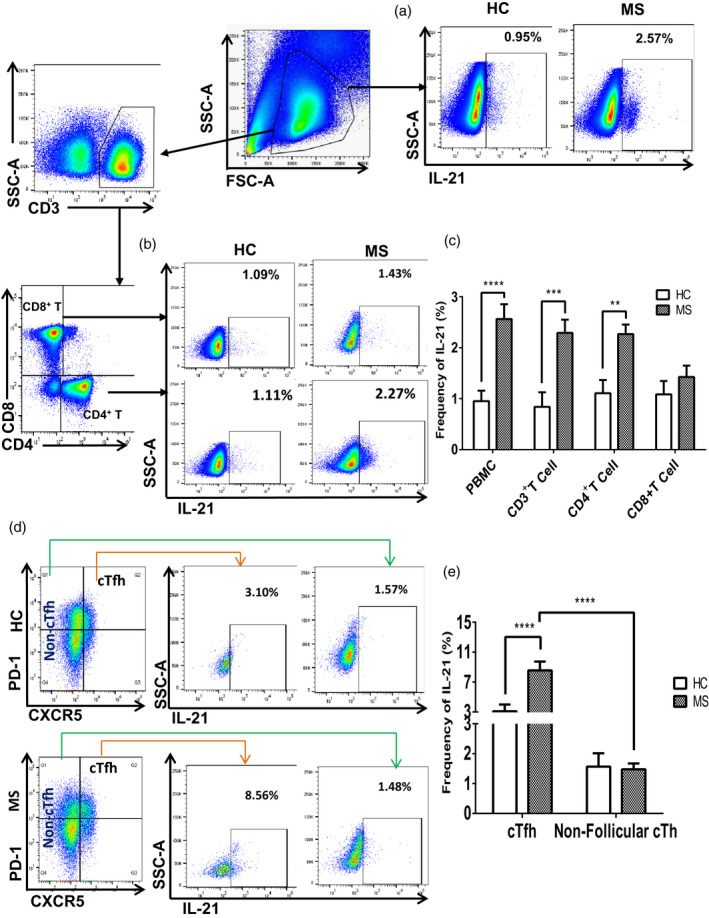Fig. 3.

Frequency of interleukin (IL)‐21‐secreting circulating T follicular helper (cTfh) cells were higher in multiple sclerosis (MS) patients than in healthy controls (HC). Fresh peripheral blood mononuclear cells (PBMCs) from HC and MS patients were surface‐stained with monoclonal antibodies against CD3, CD4, CD8, chemokine receptor type 5 (CXCR5) and programmed cell death 1 (PD‐1). Intracellular cytokine staining was performed using anti‐IL‐21 antibody after stimulating for 5 h with phorbol myristate acetate (PMA), ionomycin and GolgiStop (a,b) gating strategy; IL‐21‐positive population was selected from PBMCs, CD4+ T cells and CD8+ T cells, c) percentages of IL‐21 secretion in PBMCs, CD3+ T, CD4+ T and CD8+ T cells from MS patients were calculated and compared to those of HC, ****P < 0·0001, ***P = 0·0004 and **P = 0·001; (d) gating strategy: IL‐21‐positive cells were selected from CXCR5+PD‐1+ Tfh cells and CD4+CXCR5− non‐follicular cTh cells; (e) average frequencies of IL‐21‐producing cTfh and non‐follicular circulating T cells (cTh) cells were calculated and compared between HC and MS; ****P < 0·0001 on the left indicates the difference of IL‐21‐secreting cTfh cells between MS patients and HC; ****P < 0·0001 on the right represents the statistical analysis of IL‐21‐producing circulating T follicular helper (cTfh) versus non‐follicular cTh cells in MS patients.
